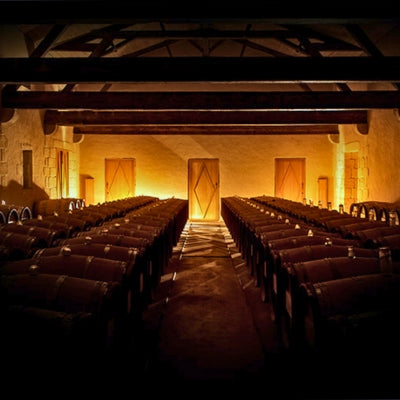
Liquid Gold Part II: Sauternes winemaking and classifications
In the second part of our series on “Liquid Gold”, Westgarth Wines wine expert Maurizio Broggi turns again to Sauternes to look at the harvest, winemaking, communes, classifications and its future.
Producing Sauternes
Producing Sauternes is one of the most risk-laden endeavors in viticulture. Unlike most wine styles where growers can harvest once ripeness is achieved, Sauternes producers must play a dangerous waiting game with nature. They must allow grapes to remain on the vine long after normal harvest time, waiting for noble rot to develop fully. This delay risks complete crop loss due to autumn rains, which can trigger destructive grey rot.
Even frost poses a threat as the season progresses. In disastrous vintages like 1991, 1992, 1993, and more recently 2012, some estates produced no Sauternes at all, either because conditions never allowed proper botrytis development or because the grapes succumbed to unfavorable weather.
Even in successful years, yields are astonishingly low. The appellation's legal maximum is 25 hl/ha (10 hl/ac), although most top estates produce far less – typically 3 to 6 hl per acre. At legendary Château d'Yquem, yields often equate to just one glass of wine per vine.
The very low yields are the result of a severe selection process in the vineyard that requires scrupulous grapes and berry-by-berry selection. Trained harvesters must distinguish between ripe bunches, beneficial noble rot and harmful grey or black rot. This strict selection may require up to 10-12 passes through the vineyards over several weeks.
Depending on the wine style, vintage and weather conditions, a combination of botrytized and late harvested grapes will usually be harvested. The necessary triage explains why harvest can stretch from September to November. The human cost is significant – skilled pickers must be retained for extended periods, adding significantly to production costs. But there's no alternative; the quality of fine Sauternes depends entirely on this rigorous selection.
The winemaking of Sauternes
Once the precious botrytized grapes reach the winery, they must be carefully pressed to avoid extracting harsh phenolics from the botrytized skins. The resulting juice is intensely sweet.
While some producers ferment in stainless steel or concrete tanks, the finest Sauternes are typically fermented in French oak barriques, usually with a significant proportion of new oak, 30-50% is common, with some top chateaux such as Yquem using up to 100% new oak barrels. Barrel fermentation helps integrate oak flavors with the fruit, creating a more harmonious wine.
The extremely high sugar levels make for a challenging environment for yeast, and fermentations may even stop naturally when alcohol reaches 13-15%, leaving substantial residual sugar (typically 120-160 g/L, though some top wines exceed this). Winemakers may choose to intervene with sulfur dioxide to halt fermentation at their desired balance of sweetness and alcohol.
Aging follows fermentation, with top wines spending 18 to 36 months in barrel. This extended élevage imparts vanilla and spicy notes and provides a round, smooth texture to the wine. Top Sauternes can evolve beautifully and keep for decades, developing increasingly complex and more intense flavors of marmalade, dried fruit, caramel, toffee and toasty notes.
Communes, classification, and the future of Sauternes
The Sauternes appellation encompasses five communes: Sauternes, Barsac, Bommes, Fargues, and Preignac. The commune of Sauternes, which gives the appellation its name, is known for producing powerful, rich wines with intense honeyed and tropical fruit characteristics. Barsac holds the unique privilege of labeling its wines as either Barsac AOC or Sauternes AOC. Its alluvial soils and proximity to the Ciron River result in wines that are slightly lighter and more elegant, with brighter, fresher acidity.
The 1855 Bordeaux Classification ranked the top Sauternes châteaux into First Growth (Premier Cru) and Second Growth (Deuxième Cru). Interestingly, the most expensive Bordeaux wine at the time was Château d’Yquem, which received the unique title of ‘Premier Cru Supérieur’. While the 1855 classification remains a key benchmark for quality, several unclassified estates – such as Château de Fargues, Château Raymond-Lafon, Château Gilette, and Château Haut-Bergeron – produce wines of comparable quality.
Despite its glorious history, Sauternes faces significant challenges in the 21st century. Changing consumer tastes have led to declining demand for sweet wines worldwide, forcing producers to adapt. Many châteaux now also make high quality dry white wines under the Bordeaux AOC to generate more consistent cash flow. Climate change presents another concern as warmer temperatures may alter the delicate balance needed for noble rot development.
Sauternes represents a style that embraces risk, rewards patience, and captures both a unique terroir and a deep historic heritage. For wine connoisseurs and collectors around the world, it remains one of Bordeaux's greatest treasures – a wine of such complexity and longevity that it rightfully earns its place among the world’s most legendary wines.
Stay tuned for Part III of our series, which will deep dive into another “Liquid Gold” region - Tokaji.
Want to read more? Take a look at some of our other blogs:



